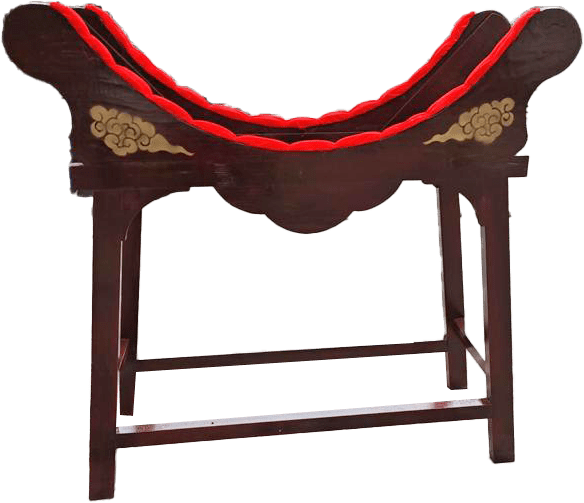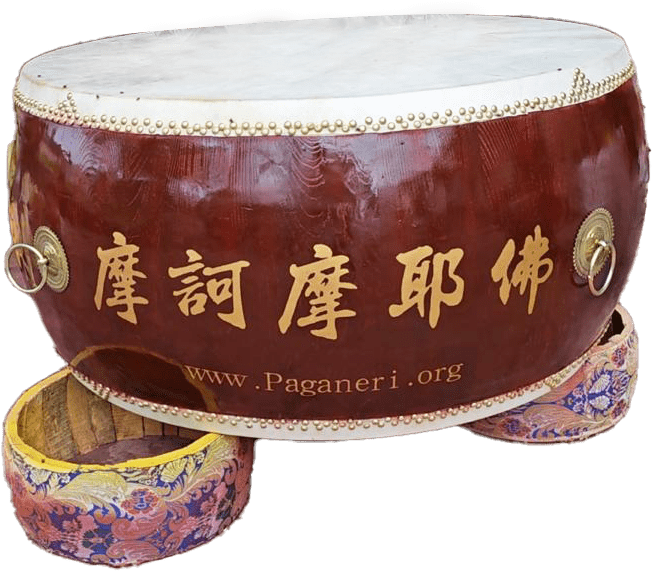Manomaya Buddha Temple Drums Beat Away Negative Energy
The Buddha Temple Drum is a mesmerizing instrument that is used in various Buddhist ceremonies and rituals across Asia. This drum has deep cultural and spiritual significance and its origins can be traced back to ancient times.
Today, the Buddha Temple Drum continues to play a vital role in Buddhist culture and has become a symbol of mindfulness, meditation, and peace. This article examines the history, significance, and symbolism of the Buddha Temple Drum, as well as the manufacturing process, the different types, and its use in modern times.
History and Significance of Buddha Temple Drum
The Buddha Temple Drum, also known as the Buddhist temple drum, has been an important part of Buddhist culture for centuries. Its origins can be traced back to ancient China, where it was used not only in Buddhist ceremonies but also in military and governmental events.
As Buddhism spread throughout Asia, so did the use of the Buddha Temple Drum. It became a staple in temples across the region, from Japan to Thailand, and was used in a variety of different ceremonies and rituals.
The Significance of the Buddha Temple Drum in Buddhist Culture
The Buddha Temple Drum holds a special significance in Buddhist culture. It is often used to symbolize the beating of the Buddha’s heart and is believed to create a deep resonance that helps practitioners connect with the Buddha’s wisdom and compassion. It is also seen as a powerful tool for meditation and mindfulness.

The Making of Buddha Temple Drum
Traditionally, the Buddha Temple Drum was made using high-quality wood such as rosewood or oak. The drumhead was typically made from animal hide, such as cow or deer skin, which was carefully selected and treated to create the perfect sound.
The manufacturing process for the Buddha Temple Drum is a complex and time-consuming affair. The wood must be carefully selected, cut, and shaped, while the drumhead must be carefully stretched and attached to the drum. Skilled artisans spend years mastering the craft of creating these beautiful instruments.
The Role of Artisans in Crafting Buddha Temple Drum
The role of artisans in crafting the Buddha Temple Drum is fundamental. These skilled craftsmen and women spend years learning how to create the perfect drum, using traditional techniques that have been handed down for generations. Their dedication to their craft ensures that each drum is of the highest quality and produces the perfect sound.


The Structure and Design of Buddha Temple Drum
The Buddha Temple Drum is a large, cylindrical instrument that typically measures around three feet in height and two feet in diameter. It is made up of two parts, the wooden body and the drumhead, which is stretched tightly across the top of the drum.
The Symbolic Meaning of Buddha Temple Drum's Components
புத்தர் கோயில் மேளத்தின் கூறுகளின் குறியீட்டு பொருள்
The Buddha Temple Drum comprises of several components, each carrying a symbolic meaning.
The drumhead represents the heavens and is believed to produce a sound that carries the prayers and wishes of the people to the gods.
The drum body, which is often decorated with dragon or phoenix motifs, represents the earth and symbolizes strength and power.
The drumsticks, made from bamboo or wood, represent morality and wisdom.
புத்தர் கோயில் மேளம் பல கூறுகளைக் கொண்டுள்ளது, ஒவ்வொன்றும் ஒரு குறியீட்டு அர்த்தத்தைக் கொண்டுள்ளது.
மேளத்தின் முகப்புப்பக்கம் வானத்தைப் பிரதிநிதித்துவப்படுத்துகிறது மற்றும் மக்களின் பிரார்த்தனைகளையும் விருப்பங்களையும் தெய்வங்களுக்கு எடுத்துச் செல்லும் ஒலியை உருவாக்குவதாக நம்பப்படுகிறது.
மேளத்தின் நடுப்பகுதி, பெரும்பாலும் டிராகன் அல்லது பீனிக்ஸ் உருவங்களால் அலங்கரிக்கப்பட்டுள்ளது, இது பூமியைக் குறிக்கிறது மற்றும் வலிமை மற்றும் சக்தியைக் குறிக்கிறது.
மூங்கில் அல்லது மரத்தால் செய்யப்பட்ட குச்சிகள், ஒழுக்கத்தையும் ஞானத்தையும் குறிக்கிறது.
The Significance of Buddha Temple Drum in Buddhist Ceremonies
The Buddha Temple Drum plays a central role in Buddhist ceremonies and rituals. Its deep, resonant sound is believed to create a powerful energy that can help practitioners connect with the Buddha’s wisdom and compassion. It is often used to mark the beginning and end of ceremonies, as well as to accompany chanting and meditation.
The Use of Buddha Temple Drum in Buddhist Chanting and Meditation
The Buddha Temple Drum is a powerful tool for chanting and meditation. Its deep, rhythmic sound can help practitioners focus their minds and connect with their inner selves. It is often used to create a sense of calm and tranquillity, and to facilitate a deeper understanding of Buddhist teachings.
The Role of Buddha Temple Drum in Buddhist Festivals and Rituals
The Buddha Temple Drum is an essential part of many Buddhist festivals and rituals. It is often used to accompany processionals, parades, and other celebratory events. Its powerful sound can help create a sense of joy and excitement, while also serving as a reminder of the central role that Buddhism plays in the lives of its followers.
The Buddha Temple Drum is an integral part of Asian culture and holds significant spiritual and symbolic meaning. In many Asian countries, the drum is used in religious ceremonies, festivals, and rituals. It is believed to be a powerful instrument that can call upon the gods, drive away evil spirits, and purify the mind and soul.
In Asian countries such as Japan, China, and Korea, the Buddha Temple Drum is considered a sacred object used in Buddhist rituals and ceremonies. It is often crafted from valuable materials such as bronze, wood, or leather and is adorned with intricate designs and symbols that reflect the country’s rich cultural heritage. The drum is used to signify the beginning and end of ceremonies and is played in a specific rhythm that is believed to bring inner peace and harmony.
The Buddha Temple Drum comprises of several components, each carrying a symbolic meaning. The drumhead represents the heavens and is believed to produce a sound that carries the prayers and wishes of the people to the gods. The drum body, which is often decorated with dragon or phoenix motifs, represents the earth and symbolizes strength and power. The drumsticks, made from bamboo or wood, represent morality and wisdom.
Modern Usage and
Preservation of Buddha
Temple Drum
In modern times, the Buddha Temple Drum continues to be used in traditional ceremonies and festivals, as well as in contemporary music and performances. However, with the advent of modern technology, the preservation of this ancient tradition has become a challenge.
The Contemporary Use
of Buddha Temple
Drum
Today, the Buddha Temple Drum is not only used in religious ceremonies but also in modern music genres such as rock and jazz. Musicians are experimenting with new sounds and ways of playing the drum while still preserving its traditional significance. The drum has become a symbol of cultural identity and is used to promote Asian culture and traditions.
The Importance of Preserving Buddha Temple Drum Traditions
With the increasing use of modern technology and the decline of traditional craftsmanship, the preservation of Buddha Temple Drum traditions has become a priority. Efforts are being made to teach the younger generation how to craft and play the drums, ensuring that the tradition continues for generations to come. Additionally, museums and cultural institautions are displaying and preserving priceless Buddha Temple Drums as a cultural heritage item.
How Modern Technology is Affecting the Production and Use of Buddha Temple Drum
While modern technology has made it easier to produce the Buddha Temple Drum, it has also led to the use of cheaper and less authentic materials. This has resulted in a decline in the quality of the drums produced.
Additionally, electronic drums and other modern instruments have become a popular alternative to traditional instruments, leading to a decrease in the demand for traditional instruments such as the Buddha Temple Drum. It is essential to find a balance between maintaining the traditional use and significance of the drum and incorporating modern technology. The Buddha Temple Drum has survived the test of time and continues to be an integral part of Buddhist culture. Its unique sound and intricate design make it a fascinating instrument to study and appreciate. As we move forward in time, it is crucial to preserve the traditions and techniques used in crafting and using the Buddha Temple Drum to ensure that this wonderful instrument continues to be cherished for generations to come.
FAQs
The Buddha Temple Drum has its origins in ancient Asia, particularly in China and Japan. It was initially used as a signalling device for military purposes but was later adopted by Buddhist monks for spiritual purposes.
The Buddha Temple Drum is considered a symbol of mindfulness, meditation, and peace in Buddhist culture. It is believed to produce a sound that is conducive to meditation, helping to calm the mind and aid in spiritual practice.
The manufacturing process of the Buddha Temple Drum involves the use of various materials such as wood, metal, and leather. The artisans use traditional techniques such as carving, painting, and hammering to create the intricate design of the drum.
Today, the Buddha Temple Drum is still used in various Buddhist ceremonies and rituals across Asia. It has also gained popularity in the Western world and is often used in meditation centres and yoga studios to create a peaceful and calming atmosphere.
